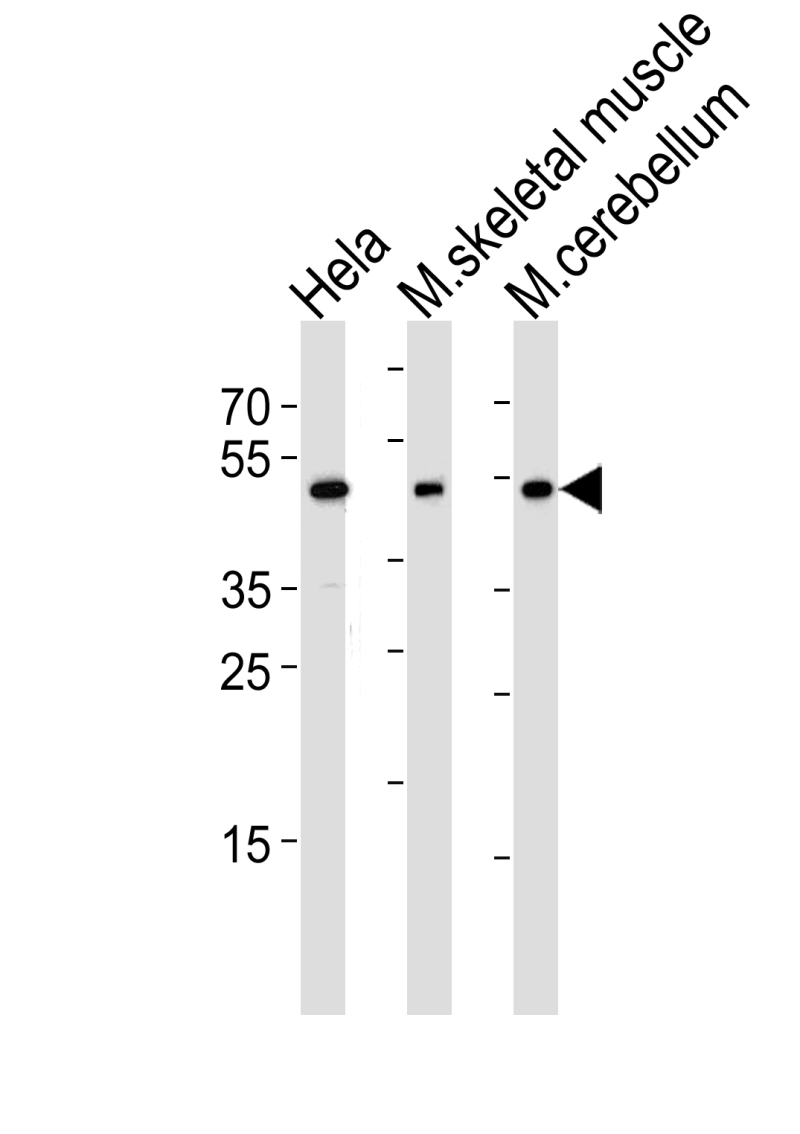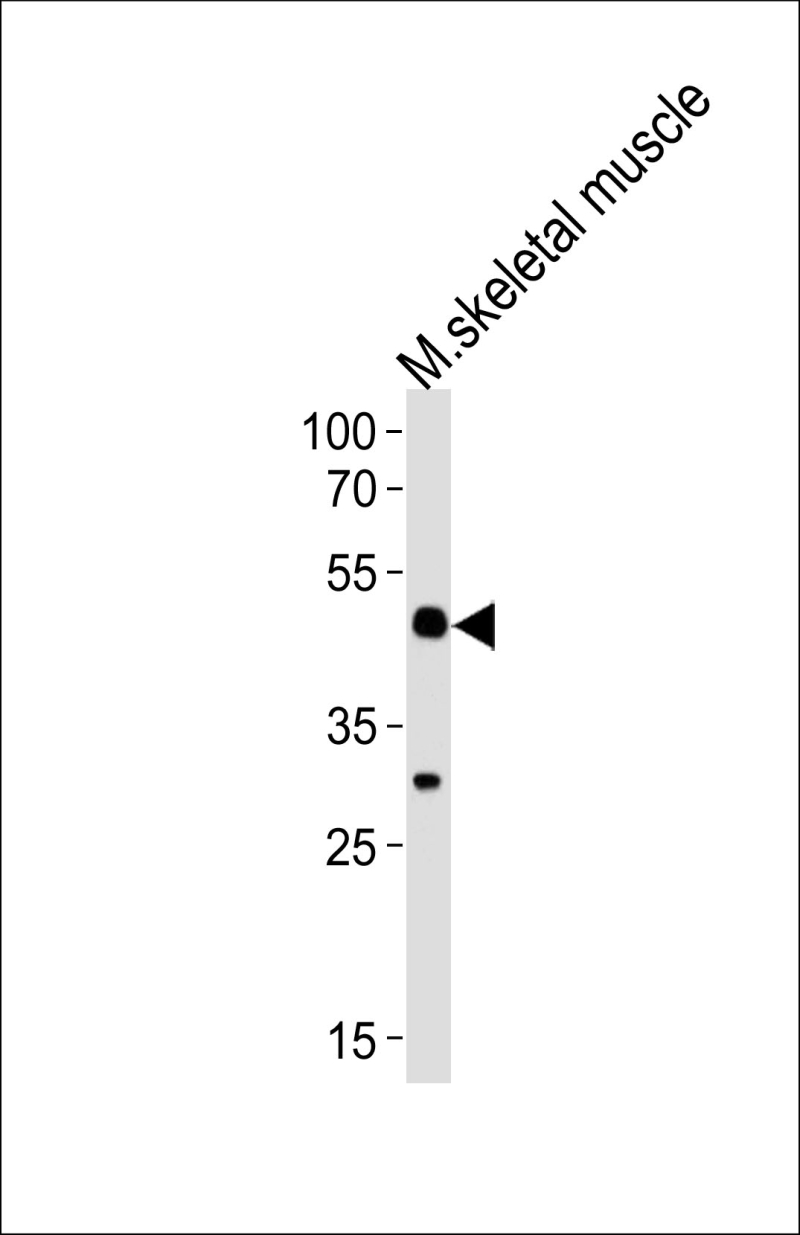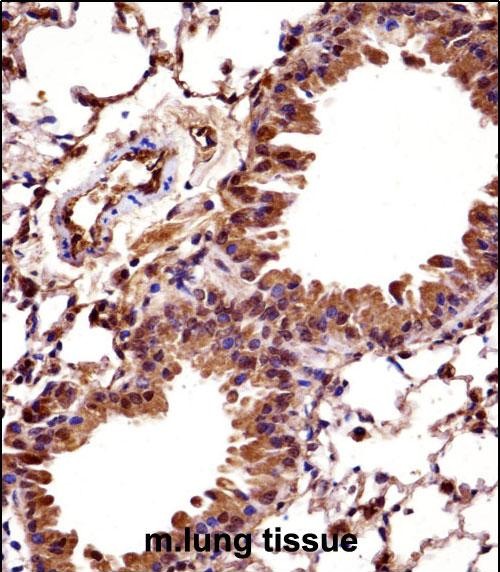


| WB | 1/1000 | Human,Mouse,Rat |
| IF | 咨询技术 | Human,Mouse,Rat |
| IHC | 1/100-1/500 | Human,Mouse,Rat |
| ICC | 技术咨询 | Human,Mouse,Rat |
| FCM | 咨询技术 | Human,Mouse,Rat |
| Elisa | 咨询技术 | Human,Mouse,Rat |
| Aliases | Homeobox protein Hox-C10, Homeobox protein Hox-36, Hoxc10, Hox-36, Hoxc-10 |
| Entrez GeneID | 209448 |
| WB Predicted band size | 38.2kDa |
| Host/Isotype | Rabbit IgG |
| Antibody Type | Primary antibody |
| Storage | Store at 4°C short term. Aliquot and store at -20°C long term. Avoid freeze/thaw cycles. |
| Species Reactivity | Human, Mouse |
| Immunogen | This Mouse Hoxc10 antibody is generated from rabbits immunized with a KLH conjugated synthetic peptide between 217-246 amino acids from the C-terminal region of mouse Hoxc10. |
| Formulation | Purified antibody in PBS with 0.05% sodium azide. |
+ +
以下是3篇涉及小鼠Hoxc10抗体的参考文献示例(部分信息为模拟生成):
1. **"Hoxc10 regulates hindlimb neuromuscular patterning through muscle progenitor specification"**
*作者:Yang, X., et al. (2001)*
摘要:该研究利用Hoxc10特异性抗体分析其在胚胎后肢神经肌肉发育中的表达模式,揭示Hoxc10通过调控肌肉祖细胞分化参与运动神经元路径导向。
2. **"Spatiotemporal expression of Hoxc10 in mouse spinal cord development"**
*作者:Shah, R., & Dasen, J. (2008)*
摘要:通过免疫组化与Hoxc10抗体的结合,系统描绘了Hoxc10蛋白在小鼠胚胎脊髓不同区域的动态表达,证实其参与脊髓运动神经元亚型特化的调控机制。
3. **"Hoxc10 knockout mice exhibit homeotic transformation of lumbar vertebrae"**
*作者:Lee, S.K., et al. (2015)*
摘要:研究采用Hoxc10抗体进行Western blot和免疫荧光检测,发现Hoxc10缺失导致小鼠腰椎向胸椎的形态转化,证明其在体节身份决定中的关键作用。
注:以上文献信息为示例性质,实际文献需通过PubMed/Web of Science等平台以"Hoxc10 antibody"和"mouse"为关键词检索确认。若需具体文献,建议补充抗体生产商信息(如Santa Cruz的sc-101010)以精准定位商业抗体引用文献。
The mouse Hoxc10 antibody is a specialized tool used to detect and study the Hoxc10 protein, a member of the Hox gene family critical for regulating embryonic development and cellular differentiation. Hox genes encode transcription factors that establish body segment identity along the anterior-posterior axis during embryogenesis. Specifically, Hoxc10 is involved in patterning the posterior regions of the developing embryo, including the spinal cord, limbs, and urogenital system. It plays a role in neuronal specification, skeletal development, and tissue homeostasis, with dysregulation linked to developmental anomalies and certain cancers.
Antibodies targeting mouse Hoxc10 are typically generated using immunogenic peptides or recombinant protein fragments corresponding to conserved regions of the Hoxc10 protein. These antibodies are validated for specificity through techniques like Western blotting, immunohistochemistry (IHC), and immunofluorescence (IF), often showing reactivity at the expected molecular weight (~40-45 kDa). Host species (e.g., rabbit, mouse) and clonality (monoclonal/polyclonal) vary by commercial source.
Researchers employ these antibodies to investigate Hoxc10's spatiotemporal expression patterns, its role in developmental pathways, and its interactions with other regulatory molecules. Applications extend to studying disease models, such as neural tube defects or cancer progression. Proper controls, including knockout validation, are essential to confirm antibody specificity due to potential cross-reactivity with homologous Hox proteins. This tool remains vital for unraveling Hox-mediated mechanisms in developmental biology and pathology.
×